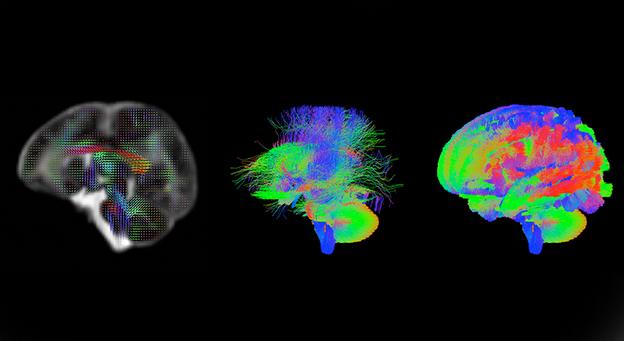Baby brain scans reveal trillions of neural connections
- Published

The scans show anatomical connections in the developing brain
UK scientists have released the first batch of "groundbreaking" medical scans that reveal step-by-step how the human brain develops in babies.
Researchers around the world can use the data to understand what healthy growth looks like, say the experts.
The detailed MRI scans could also improve understanding of conditions such as autism and cerebral palsy.
They precisely plot how the billions of neurons form and connect together.
Mother of all wiring diagrams
The team from King's College London, Imperial College London and the University of Oxford say their task has been incredibly challenging.
Newborn human brains contain trillions of pathways, packed into an organ that is about the size of a small tangerine.
3D reconstruction of the brain's surface from newborn brain MRI data
So far, the scientists have released data they collected by scanning 40 babies a few days after birth.
Lead investigator Prof David Edwards said getting permission from new parents to allow their babies to be scanned was "a big ask".
"It's perfectly safe. There's no radiation or X-rays involved. But we are incredibly grateful to the families who have taken part in this work. It's contributing hugely to science."
Their plan is to scan many more newborns, as well as babies still growing in the womb.
Then they will create a dynamic map of human brain connectivity.
Prof Edwards said: "Having lots of data will mean we can study what is normal and abnormal in terms of brain development.
"We can start to answer important questions, like what happens to the brain when babies are born prematurely or how does the brain develop differently in children with autism."
The work, which is funded with a 14.9m euro European Research Council grant, will take a few more years to complete.
When it is finished, the researchers say theirs will be the biggest and best-quality collection of baby brain development images ever gathered.
A has already been made.
Follow Michelle